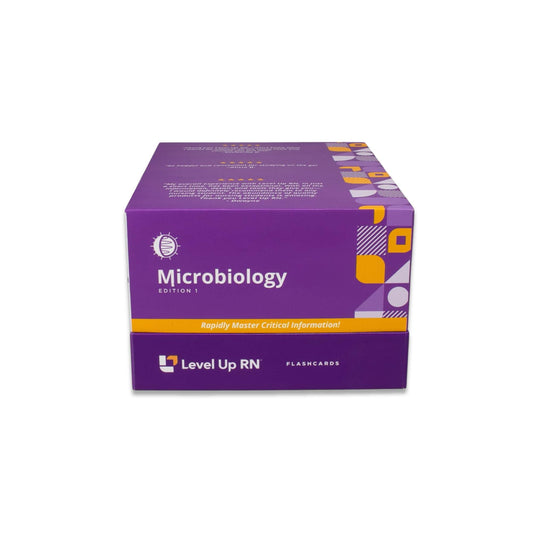Microbiology, part 46: Acellular Infectious Agents - Viral Replication in an Animal Host
Viral replication in an animal host, including the steps involved: attachment, entry, uncoating, biosynthesis, assembly, and release. Plus, membrane fusion, endocytosis, exocytosis, and budding.
Full Transcript: Microbiology, part 46: Acellular Infectious Agents - Viral Replication in an Animal Host
Full Transcript: Microbiology, part 46: Acellular Infectious Agents - Viral Replication in an Animal Host
Hi, I'm Cathy with Level Up RN. In this video, I will be discussing viral replication within an animal host, which includes humans. And at the end of the video, I'm going to give you guys a little quiz to test your understanding of some of the key facts I'll be covering, so be sure to stay for that. And if you have our Level Up RN microbiology flashcards, go ahead and pull them out so you can follow along with me. And of note, our flashcards are also available via Flashables, which offers personalized learning and progress tracking.
Some of the steps involved in animal virus replication are similar to the steps involved in bacteriophage replication, which I covered in a previous video. However, there are some key differences. The first step in animal virus replication is attachment, which is where the virus binds to the host cell. Next, the virus enters the host cell. Most viruses that have an envelope will enter through membrane fusion, whereas non-enveloped viruses will enter the cell through endocytosis. The image here shows a virus entering the host cell via endocytosis.
As a reminder, with membrane fusion, the viral envelope fuses with the host cell membrane, and the viral contents are basically dumped into the cell. Whereas with endocytosis, the host cell engulfs the virus. So the host cell's membrane surrounds the virus, and then it pinches off to form an intracellular vesicle.
The next step is uncoating of the virus. This is where the capsid proteins are removed from the virus and the viral contents are released. This includes genetic material and viral enzymes. Next, during biosynthesis, the virus takes over the host cell's machinery to make viral proteins and replicate its genome. This can occur in the nucleus of the host cell or in the cytoplasm. Then during assembly, the viral components are assembled together to form new viral particles. And then finally, the new viral particles are released from the cell through exocytosis, budding, or rupture of the host cell.
With exocytosis, a vesicle containing viral particles fuses with the host cell's membrane, and the viral particles are released into the extracellular environment. With budding, the virus essentially pushes its way out of the host cell and takes a piece of the host cell's membrane with it, which forms an envelope around the virus. An example of an enveloped virus that leaves the cell via budding is the influenza virus. And then finally, most non-enveloped viruses are released through rupture of the host cell. Examples of viruses that are released through cell lysis include the Poliovirus and Norovirus.
All right. It's quiz time, and I have three questions for you.
Question number one. Capsid proteins are removed and viral components are released during which stage of viral replication in an animal host?
The answer is...uncoating.
Question number two. Do non-enveloped viruses typically enter the host cell via membrane fusion or endocytosis?
The answer is...endocytosis because they lack an envelope which is required for membrane fusion.
Question number three. When a virus is released by blank, the virus exits the host cell and takes a piece of the host cell's membrane with it, which forms an envelope around the virus.
The answer is...budding.
All right. That's it for this video. I hope you enjoyed it and learned a lot. Take care, and good luck with studying.


